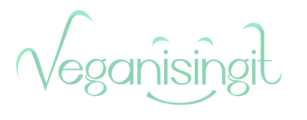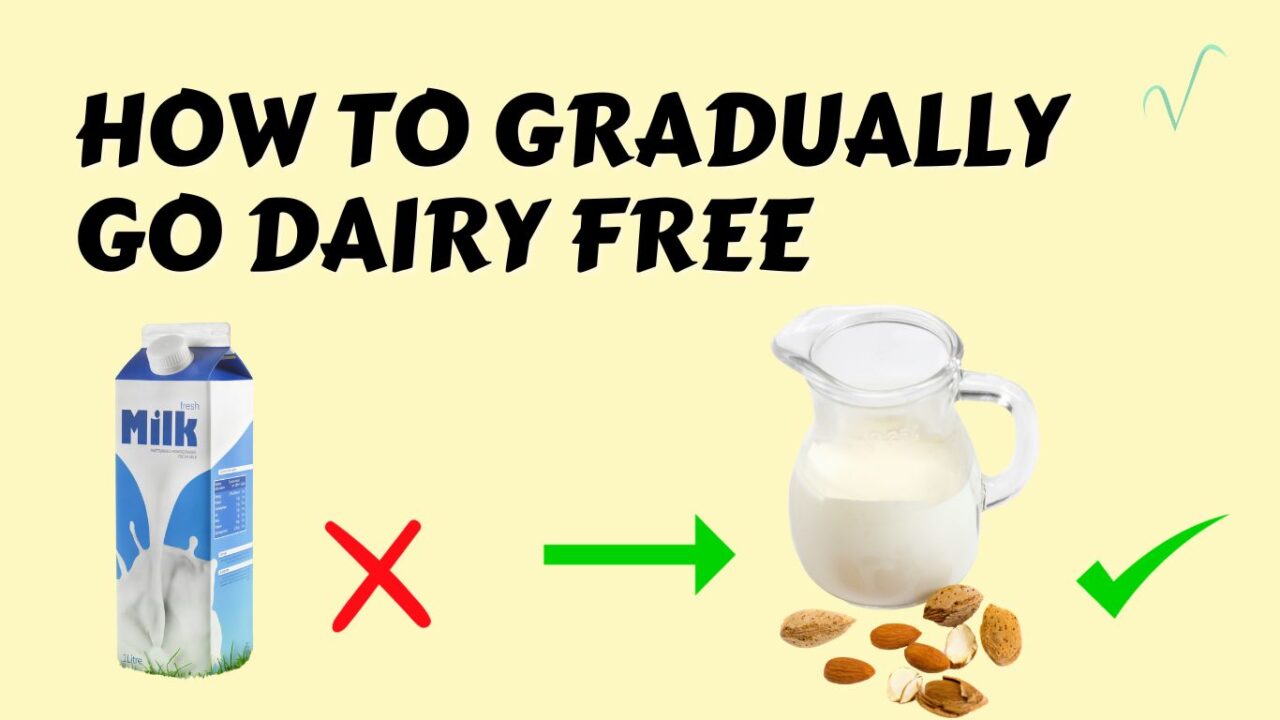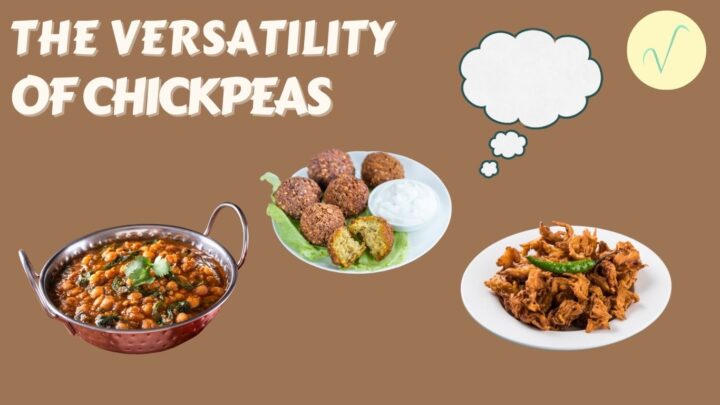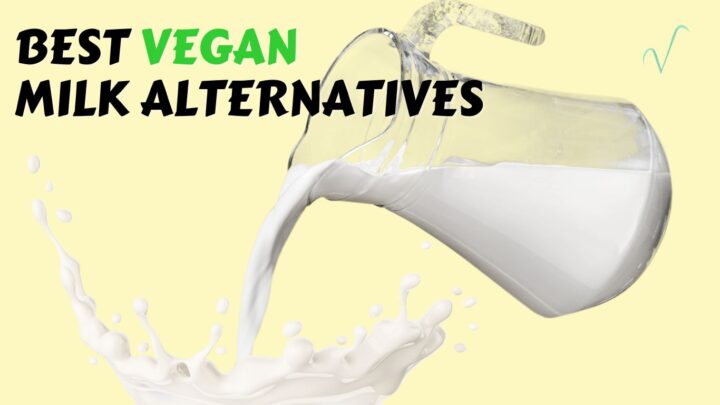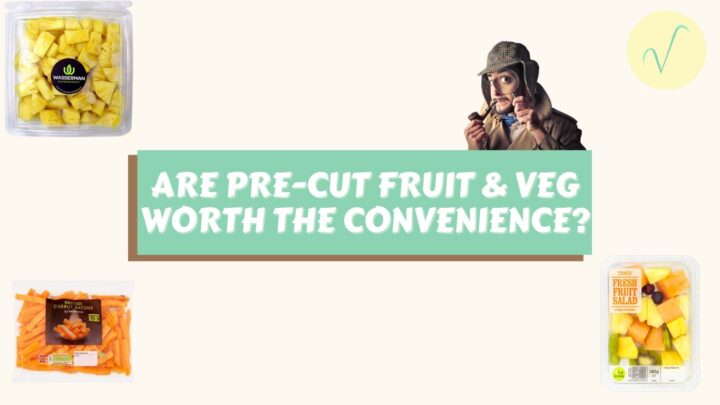A big part about going vegan is about weaning off milk and cheese. Although there is a large number of people allergic to milk, I think we can all agree it’s snuck into pretty much anything.
This post is going to go through the basics of how to gradually quit dairy, one step at a time.
Replacing your dairy-based favourites
Firstly, if you want to still eat the same types of foods, sans the dairy, you’re going to have to find some substitutes.
Milk
The best thing about going vegan has got to be the range of plant-based milks available. I genuinely had no idea I would prefer the idea of almond milk over dairy but I gotta say, it’s second nature to me now.

Vegan milk comes in all shapes and sizes, with a few examples being:
Rice
Oat
Soy
Nut (almond, cashew, walnut)
Hemp
We go through which milks are better for what (cereal, coffee, milkshakes) in a previous article.
Cream
Vegan creams are available, typically as double cream and single cream substitutes.

Some options include:
Cashew
Oat
Soy
Almond
Rice
This is key to get your creamy pastas on point, with nut free and gluten free options for those who’d need it.
Yoghurt
If you love your yoghurt in the morning you don’t have to miss out once you go vegan.

You have a choice to get both sweet and plain options, much like dairy, with the following choices available:
Cashew
Coconut
Soy
You can get a plain soy yoghurt substitute and make some delicious tzatziki to pair with mezze and hummus!
Ice cream
Vegan ice cream is delicious, but comes at a fault. It’s damn expensive, and rare to find options from an ice cream truck, for instance.

That being said, plenty of non vegan brands have provided vegan options to satisfy our ice cream cravings, including some of the following brands:
Magnum
Ben and Jerrys
Walls
You can still eat your ice cream cones, just might have to be homemade till you find a local vegan gelataria.
Cheese
Cheese is another ingredient I missed as a newbie vegan, pizzas, nachos and cheese, grilled cheese sandwiches and not to mention the myriad of cheese based meals I love.

Vegan cheese does tend to have a key difference when it comes to texture, especially when melted. The good thing is, once you find a good few substitutes you love, you’ll get used to the texture and start to rediscover cheese again.
I’ve seen everything from:
Cheddar, edam and mozarella slices and other grated options
Spreads, both plain and with herbs
Cashew based camembert
Feta
Tip: Go for the cheese types that aren’t associated with melting, but more gooey or firm varieties. This way when you enjoy some cheeze spread on a cracker, vegan Camembert or from a veganised feta block, it doesn’t feel like a constant comparison.

Butter
Butter is a key ingredient for those baking or even for your toast. Now more than ever, we’ve got a lot of vegan butter options to chose from, with big brands also following suit.
Butter brands you’d be familiar with include:
Vitalite
Flora
Pure sunflower
Be weary to limit your butter consumption, as too much vegetable oil isn’t good for anyone.

Avoid hidden dairy
Be careful when selecting ingredients on the shelves, you’d be surprised which products sometimes contain milk.
Some include:
Cookies
Cakes
Bread
Hashbrowns (yes really)
Spring rolls (yup)
Hidden dairy is one of many food groups that make you need to check ingredient lists all the time. More on this in our other post “is it vegan?”, for other foods commonly mistaken for being vegan-friendly.
Should we even be consuming dairy?
We as humans logically shouldn’t consume dairy. It’s so unnatural, that it’s rather strange that we still do it in modern life.
There are a myriad of reasons why people shouldn’t consume dairy, but we’ll save that for another post.
The majority of the world is lactose intolerant
About 65% of the world is lactose intolerant, yet we force dairy into our lives like we’ve got cows as uncles.
It shouldn’t come as a surprise considering the only animal-based milk we should be consuming is our mum’s, in infancy.

Does dairy lead to brittle bones?
I’m sure we all grew up and were under the impression that milk consumption led to strong bones. I know, because I thought this too, and drank milk everyday.
A recent Swedish study suggests 3 or more daily glasses of milk lead to increased risk of fractures and premature death.

Gradually cutting out dairy
Hopefully this post helped you achieve your overall goal, cutting out dairy.
Just remember to have everything in moderation, go for products with minimal, readable ingredients, even if it’s a bit more pricey. We hope you learnt a thing or two, feel free to drop your thoughts below.
Thanks for taking the time to read this article, stay well and stay blessed.
